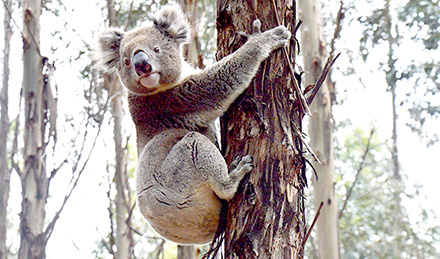Land zoned for forestry or primary production in regional NSW will not be subject to the new State Environmental Planning Policy. Core rural zones in rural areas will be decoupled from the SEPP as new codes that protect koala habitat under the Local Land Services Act are developed over the next month. Source: Timberbiz
This will vastly reduce red tape by removing the dual consent requirements facing farmers and foresters while immediately introducing enhanced protection for koala habitat in areas where more than 95 per cent of development activity occurs.
Deputy Premier John Barilaro said the concerns of landholders in regional NSW have been heard by the NSW Government.
“Land zoned for primary production or forestry in regional NSW will not be subject to the new SEPP, which means farmers will not be strangled by red tape.
Australian Forest Products Association CEO Ross Hampton said the was a balanced decision that should avoid unnecessary duplication for already strictly regulated forestry operations on private land.
“I commend the NSW Government for listening to the forest industries on this important policy reform, and we look forward to seeing the detail of this announcement,” Mr Hampton said.
“The forestry sector takes koala conservation very seriously, which is why the Private Native Forestry (PNF) Codes of Practice already provide significant environmental protections.”
“The new SEPP was always intended to apply to areas where large scale development is underway as our cities and towns expand. That is where it is needed, not in those regions where forest industries and farmers already operate under strict conditions to protect koala habitats, as well as other native species and fauna.”
Mr Hampton said private native forestry was a critical source of sustainably harvested hardwood timber for NSW timber mills producing the quality hardwood timber products that Australians love.
“AFPA will continue to work with the NSW Government to ensure the revised PNF Codes strike the right balance between the environment, landowners and forest industry’s needs,” Mr Hampton said.
Energy and Environment Minister Matt Kean said the new solution will ensure protections for core koala habitat and colonies across NSW.
“We have ambitious plans to double koala populations in NSW by 2050 and that means we need the right policy tools in place to protect and preserve wildlife and their habitat,” Mr Kean said.
“This is a good first step and we will continue to build on that with our soon to be announced Koala Strategy 2.0 which will include targeted conservation and investment actions to boost conservation across the state.”
To ensure that Koala habitat is protected, whilst limiting unnecessary regulation on rural land use, the following measures will be introduced:
- Koala SEPP 2019 will be remade across NSW as Koala SEPP 2021;
- The existing Koala SEPP 2020 will continue to apply in core rural zones (RU 1, 2 and 3), except in metropolitan Sydney, Blue Mountains and the Central Coast, where Koala SEPP 2021 will apply across all zones;
- Comprehensive Koala Plans of Management (KPOM) will be finalised to protect koala habitat in Tweed and Byron Shires.
- Private Native Forestry (PNF) and Local Land Services (LLS) codes will be revised to ensure robust protections for koalas in areas of high value koala habitat and certainty and consistency for primary producers;
- The Minister for Planning will issue a new section 9.1 direction to ensure that only the Minister, and not councils, will be empowered to rezone land used for primary production to an environmental zone, or to rezone land currently in rural zones 1, 2 and 3 to other rural zones;
- Once the codes are finalised and reflected in legislation (as required), the Koala SEPP 2020 will be repealed and the Koala SEPP 2021 will apply to the remaining land;
- At that time, dual consent provisions for PNF in local environmental plans will be removed through Koala SEPP 2021;
- Koala Plans of Management and guidelines under Koala SEPP 2021 will require the approval of the Secretary of DPIE and the concurrence of the Secretary of DRNSW.
The NSW Koala Strategy commits Government to stabilise and then increase koala numbers in the wild by identifying and protecting koala habitat on public and private land.
Since 2018, the NSW Government has invested more than $44.7 million to secure koalas in the wild as part of the NSW Koala Strategy.
To date, initiatives include purchasing more than 3600 hectares of priority habitat for permanent protection as part of the National Parks estate and securing 24,000 hectares of state forest as koala parks and reserves.






